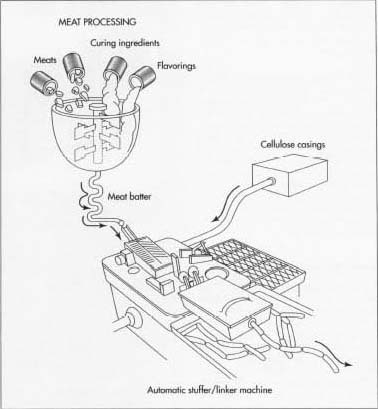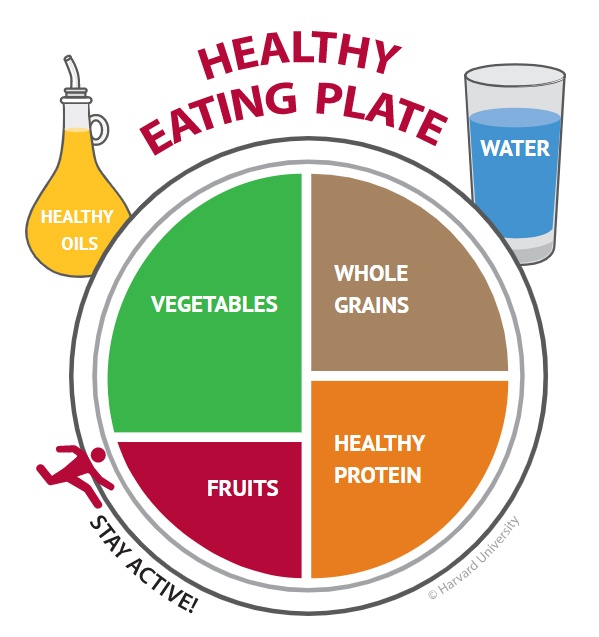Hot dogs are a staple at many barbecues and baseball games because they taste good and are easy to make, inexpensive, and of course, rather filling.
This might make you wonder, just how popular are hot dogs?
Well, according to the National Hot Dog and Sausage Council, in 2020 Americans spent $7.68 billion on hot dogs and sausages.

Funnily enough, most of these were eaten between Memorial Day and Labor Day (which just so happens to coincide with the peak of baseball season).
However, no matter when they’re eaten, hot dogs make a good snack.
Unfortunately, most people consider them to be junk food and underestimate their nutritious value.
Hot Dogs don’t only contain protein, but selenium and Vitamin B12, too. These nutrients (in addition to their high protein content), mean that hot dogs can be part of a healthy diet.
Most hot dogs are made from minced pork, beef, and chicken. This makes them rich in protein.
Protein is an essential nutrient that the body uses to build and repair muscles. It comes in two different forms, namely animal and plant protein.
In this case, hot dogs are a good source of animal protein. To better understand why this is, you need to know how hot dogs are made.
Table of Contents
- How Are Hot Dogs Made?
- Hot Dog Nutrition Information
- How Proteins in the Body Are Made
- The Health Benefits of Protein
- Frequently Asked Questions
How Are Hot Dogs Made?
Most hot dogs are made from beef or pork, but poultry versions use chicken or turkey.
The meat is cut into fine pieces and put into a blender with:
- Spices
- Curing ingredients
- Ice
These individual ingredients are accurately weighed so there’s a good balance of flavor. They’re then blended with the meat into a batter.
When the right consistency is reached, the emulsion is put into a stuffing machine, which encases the batter in a sausage casing.

Did you know? Regular hot dogs are cooked at 160 Degrees Fahrenheit in cookers. However, smoked hot dogs are cooked in smokehouses to infuse a smokey flavor.
No matter how your hot dogs are cooked, they are then packaged in vacuumed packs to maintain freshness and flavor.
Keeping your hot dogs fresh for the longest time possible is important, as they’re a good and efficient source of protein and other nutrients.
Hot Dog Nutrition Information
One 45-gram serving of a hot dog contains 4 grams of protein, which is a fifth of the recommended daily intake for an adult.
Hot dogs also contain the following nutrients:
- Fats
- Carbohydrates
- Minerals
According to the USDA, 100 grams of a hot dog contains:
| Nutrient | Amount in 100 g | Percentage of Recommended Daily Value |
|---|---|---|
| Total Fat | 26 g | 40 |
| Cholesterol | 77 mg | 25 |
| Sodium | 1,090 mg | 45 |
| Potassium | 152 mg | 4 |
| Total Carbohydrate | 4.2 g | 1 |
| Calcium | Trace | 9 |
| Iron | Trace | 6 |
| Vitamin B6 | Trace | 10 |
| Magnesium | Trace | 3 |
| Cobalamin | Trace | 26 |
In other words, they’re a good source of protein.
Remember: Proteins are essential to the body. They’re used to form tissues, enzymes, and structural building blocks for different body systems.
This might make you wonder, how are body proteins made?
How Proteins in the Body Are Made
Proteins are made from amino acids, which are combined in different ways to make different types of proteins.
Did you know? There are 20 different amino acids used in this process. 11 of these are amino acids naturally made by your body, while the other nine (also known as essential amino acids) come from food.
There are at least 10,000 different types of proteins that are made and used by the body, and you need to eat enough protein every day so that your body can make all of them.
How Much Protein Do I Need per Day?
The National Academy of Medicine recommends that adults must have at least 0.8 grams of protein per kilo of their body weight per day.
This converts to approximately 7 grams of protein for every 20 pounds of body mass. For example, a 150-pound woman needs to have at least 52.5 grams of protein per day.
Pro-Tip: Inadequate intake of protein can lead to Protein Energy Malnutrition and other complications.
The Health Benefits of Proteins
Proteins are a very important part of a balanced diet. When nutrition experts at the Harvard T. H. Chan School of Public Health came up with the Healthy Eating Plate, proteins made up a quarter of what they recommended as a healthy meal.

That’s not the only benefit to proteins, though. In fact, many scientific studies have been done on protein. Below, we’ll share some of the most interesting results:
Proteins can Curb Hunger
Proteins can make you feel fuller for longer, unlike carbohydrates or fats. In one study, after eating the same quantity of food, people that ate a meal that was richer in proteins reported feeling fuller for longer than those given fat-rich food or carbohydrate-rich food.
Protein has a powerful hunger-suppressing impact. Another study showed that women who increased their protein intake from 15% to 30% of their calorie intake ate an average of 414 fewer calories per day.
This resulted in them losing more weight than women that were not eating as much protein. So, if you’re looking to lose a couple of pounds, eating a hot dog might be able to help you get to your goal weight much faster.

However, losing weight is only the start of having a healthy lifestyle. Maintaining a healthy lifestyle is equally beneficial. Research showed that eating meals rich in protein can help people who have lost weight to maintain their new weight.
Proteins can Increase Lean Muscle Mass
Proteins can increase your lean muscle mass because your body breaks down protein that you eat and uses amino acids to make muscle. Many studies show that eating a protein-rich diet helps to maintain muscle mass and promotes muscle growth during weight training.
During weight loss, the body breaks down fat to get energy. In some cases, it inadvertently breaks down muscles as well. Eating a protein-rich diet during weight loss can stop the body from breaking down muscle so you can maintain energy without losing muscle mass.
Proteins Are Good for Bones
When scientists completed long-term studies on the effect of a protein-rich diet, the results proved that people who ate a protein-rich diet maintained their bone mass better as they aged compared to people that had low-protein diets.
These people also had a lower risk of developing osteoporosis or getting age-related bone fractures.
Proteins can Boost Metabolism
Eating naturally increases the body’s metabolism because the body uses energy to break down and absorb food.
However, a protein-rich diet can boost your metabolism further because breaking down proteins requires more energy than simply breaking down carbohydrates or fats.
The difference between breaking down proteins compared to other nutrients is significant, as the body can use an extra 100 calories per day to break down protein.
A high metabolism not only helps you lose weight faster but can also regulate your bowel movements and make you more productive during the day.
Proteins can Reduce Blood Pressure
High blood pressure, or hypertension, is a major cause of strokes and heart attacks. According to the Center for Disease Control, hypertension contributed to at least half a million deaths in 2019.
Many studies on the effects of protein on blood pressure revealed that eating a protein-rich diet significantly reduced blood pressure.
Frequently Asked Questions
Are hot dogs healthy?
Hot dogs are a good source of nutrition. They are rich in protein, Vitamin B6, and selenium.
Vitamin B6 promotes immune function in the body and regulates gluconeogenesis as well as glycogenolysis. It is also used to make hemoglobin for your red blood cells.
Selenium is a mineral that has potent antioxidant properties. It helps to counteract oxidative stress that comes from the production of free radicals in the body.
By doing so, selenium reduces inflammation in the body and boosts the immune system.
Why is it called a hot dog?
The name “hot dog” can be traced back to over 100 years ago. The cartoonist Thomas Aloysius “Tad” Dorgan is thought to have come up with the name when referring to sausages in casings. The name was catchy and was soon used all over America.
How can you make a hot dog taste better?
Hot dogs are delicious as they are, but if you want to make them taste even better, we have some ideas for you.
You can add a variety of toppings such as onion, salsa, or grilled tomato. Some people even add bacon for extra flavor.
To bring out extra flavor from your bun, you can toast it so that it is extra crunchy and flavorsome.
Finally, you can add pickled onions or pickled slaw for a tangy taste.
What is the best way to cook a hot dog?
This is a source of great debate. Some people insist that hot dogs must be boiled, while others insist that grilling is the best way to get added flavor.
We think that the best way to cook hot dogs is by grilling them. Grilled hot dogs are a lot more flavorful than boiled ones.
While grilling your hot dogs, you can also grill your toppings at the same time.
More from Articles
Hot Dogs in Cinema: Iconic Hot Dog Movie Moments
Hot dogs, the classic street food we all adore, have had some pretty memorable moments in the world of cinema! Introduction …
Fun Hot Dog Serving Ideas At Children’s Parties
If you're looking to delight your little guests with something as fun to eat as it is tasty, look no …
The Best Hot Dog Sauces from Around the World
Embark on a global culinary journey as we explore the best hot dog sauces from around the world! Hot dogs vary …
















